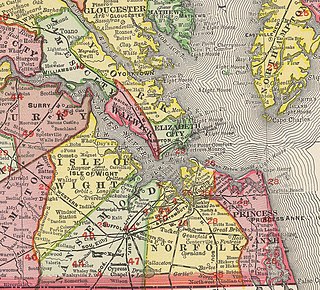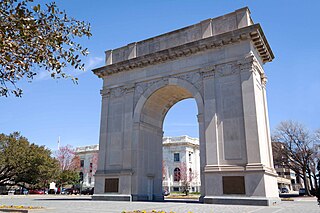
Newport News is an independent city in the Commonwealth of Virginia in the United States. At the 2020 census, the population was 186,247. Located in the Hampton Roads region, it is the fifth-most populous city in Virginia and 140th-most populous city in the United States.
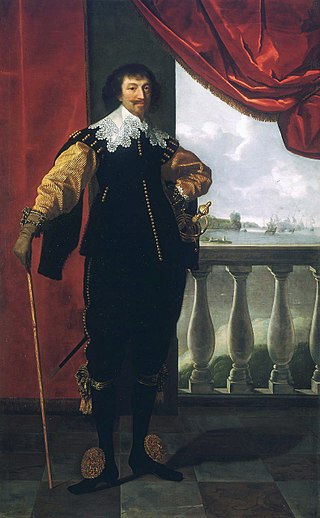
Robert Rich, 2nd Earl of Warwick KB, PC was an English naval officer, politician and peer who commanded the Parliamentarian navy during the Wars of the Three Kingdoms. A Puritan, he was also lord of the Manor of Hunningham.
Warwick River Shire was one of eight shires created in colonial Virginia in 1634. It was located on the Virginia Peninsula on the northern shore of the James River between Hampton Roads and the Jamestown Settlement.
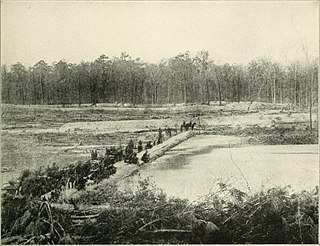
The Warwick River is a 14.4-mile-long (23.2 km) tidal estuary which empties into the James River a few miles from Hampton Roads at the southern end of Chesapeake Bay in southeast Virginia in the United States. Originating in York County near the northern side a few miles west of Yorktown, it flows south across the Virginia Peninsula and is almost entirely located in the independent city of Newport News.

Lower Brandon Plantation is located on the south shore of the James River in present-day Prince George County, Virginia.
Captain Samuel Mathews was a Virginia planter, political figure, and the father of Governor Samuel Mathews.

Newport News has a long history dating back to the days of Jamestown, Virginia. The area which is now the city of Newport News has existed under different names and forms including Elizabeth Cittie, Warwick River Shire, Warwick County, Virginia, Warwick City, and the current independent city of Newport News.
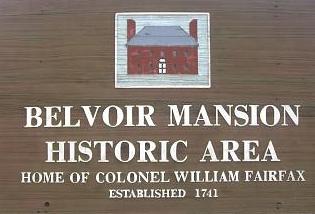
Belvoir was the plantation and estate of colonial Virginia's prominent William Fairfax family. Operated with the forced labor of enslaved people, it sat on the west bank of the Potomac River in Fairfax County, Virginia, at the present site of Fort Belvoir. The main house — called Belvoir Manor or Belvoir Mansion — burned in 1783 and was destroyed during the War of 1812. The site has been listed on the National Register of Historic Places since 1973 as "Belvoir Mansion Ruins and the Fairfax Grave."
Lt. Col. Samuel Mathews (1630–1660), Commonwealth Governor of Virginia, of Warwick County in the English Colony of Virginia, was a member of the House of Burgesses, the Governor's Council, and served as Commonwealth Governor of Virginia from 1656 until he died in office in January, 1660. There was no Royal Governorship at the time of the "Protectorate", and the Governor technically answered to the Cromwellian Parliament, although Royalist sentiment was prevalent in the colony of Virginia at this time. The former Royalist governor Berkeley arrived to replace him March 13, 1660.

Ceelys on the James was a plantation on the James River in Virginia, built in 1706 by Colonel William Wilson.
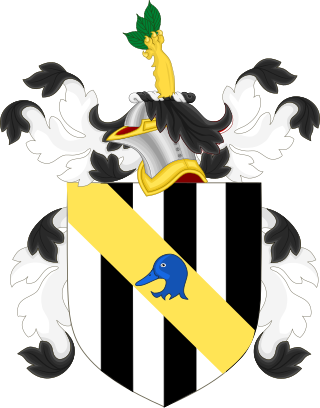
The Burwells were among the First Families of Virginia in the Colony of Virginia. John Quincy Adams once described the Burwells as typical Virginia aristocrats of their period: forthright, bland, somewhat imperious and politically simplistic by Adams' standards. In 1713, so many Burwells had intermarried with the Virginia political elite that Governor Spotswood complained that " the greater part of the present Council are related to the Family of Burwells...there will be no less than seven so near related that they will go off the Bench whenever a Cause of the Burwells come to be tried."

Boldrup Plantation Archeological Site is a historic archaeological site located at Newport News, Virginia. A modern residential development has succeeded the 17th-century plantation. Three successive colonial governors lived at Boldrup : John Harvey, Samuel Stephens (1629-1669) and William Berkeley (1605-1677). The last owned it through his wife, Frances Culpeper Berkeley, who with her new husband sold it to another member of the Virginia Governor's Council William Cole. Although it remained in the Cole family for another two generations, his namesake grandson William Cole III, advertised it for sale in 1776 and again in 1782, by which time he was living at Buckland plantation in Charles City County, which he had also inherited. Soon thereafter, Boldrup was owned by Judge Richard Cary, who was married to Mary Cole, daughter of William Cole Jr. and lived at Peartree Hall nearby, and at his death bequeathed it to his son Miles Cary. The Cary family owned several nearby plantations in Warwick and adjoining counties, including Richneck, Marshfield and Windmill Point, but never resided at Boldrup.

Denbigh Plantation Site, also known as Mathews Manor, is a historic archaeological site located at Newport News, Virginia.

Hunningham is a medieval manor located in the West Midlands (region) of Warwickshire, England. Its location is just over three miles northeast of Leamington Spa in Warwickshire. The River Leam – located on Hellidon Hill in Northamptonshire, which then flows through rural Warwickshire, including the town of Leamington Spa – forms the Manor boundary between north and west. The Fosse Way crosses the center of the town diagonally and here is a perfectly paved road. The southeast boundary of Hunningham is formed by the River Itchen, a tributary of the Leam. Today the Manor includes the parish of Hunningham. The history of the Manor of Hunningham is of great interest because it has been documented continuously for a thousand years, from the time of the Domesday Book to the present day. However, it is assumed that the creation of the Manor of Hunningham dates back to the 9th century, but there are currently no documents to prove this.
Ludwell Lee was a prominent Virginia lawyer and planter who served in both houses of the Virginia General Assembly representing Prince William and Fairfax Counties and rose to become the Speaker of the Virginia Senate. Beginning in 1799, following the death of his first wife, Lee built Belmont Manor, a planation house in Loudoun County, Virginia, which today is on the National Register of Historic Places.
William Digges was a prominent planter and politician in the Colony of Virginia, who represented Warwick County, Virginia in the House of Burgesses from 1752 until 1771.




